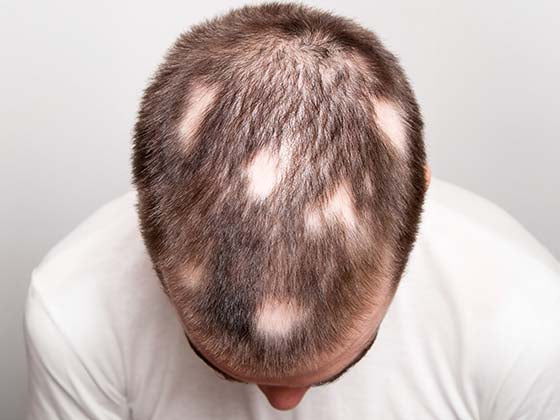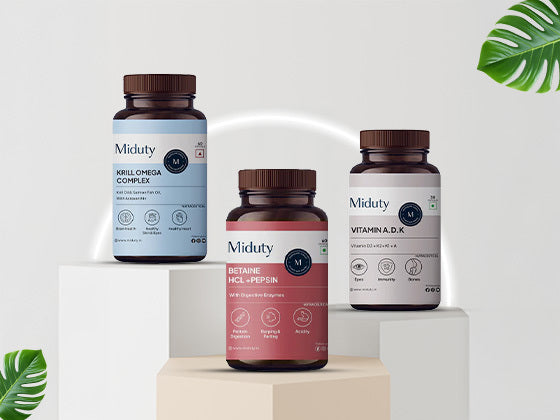Understanding the order in which to apply products to maximize their benefits and avoid potential interactions is one of the secrets to a good skincare routine. While unique skin types may necessitate modest adjustments, an effective skincare routine should include cleaning, toning, serums (if necessary), eye cream, moisturizer, and sunscreen (in the morning). Consider visiting a dermatologist or skin care specialist if you have specific skin issues or conditions. They may make personalized recommendations and direct you to the best goods for your specific needs.
Understanding the Importance of Proper Skin Care Routine Order

Understanding the significance of skincare routine order is critical for getting the most out of your skincare products and maintaining healthy skin. Product penetration and absorption, optimal outcomes, preventing product interactions, layering for efficacy, preventing irritation and sensitivity, sunscreen efficacy, eye area care, consistency, and routine formation are some of the reasons why the sequence of application is important. Understanding the significance of appropriate skincare routine orders allows you to design a routine that targets your individual skin concerns and results in healthier, more beautiful skin. However, keep in mind that different skin types may have different needs, so pay attention to how your skin reacts to each product and alter your routine accordingly.
Achieving Optimal Results through Product Layering
A vital part of a successful skincare routine is achieving optimal results through product stacking. By properly layering your skincare products, you can maximize their particular advantages and more effectively target specific skin conditions. Start with a clean canvas, layer from thinnest to thickest, use water-based products before oil-based products, and use active ingredients go first, consider PH levels, allow time between layers, be mindful of product interactions, don't forget sunscreen, target specific areas, and listen to your skin. Remember that because everyone's skin is different, attaining optimal results through product layering is a matter of trial and error. Consistency and patience are required to reap the benefits of your skincare regimen. If you are unsure about the best layering strategy for your specific skin concerns, consult with a skincare professional for personalized advice and recommendations.
How the Right Sequence Enhances Product Efficacy
The proper application sequence for skincare products can significantly improve their efficacy by optimizing absorption, allowing them to work synergistically, and avoiding potential interactions. Here's how the right sequence enhances product efficacy:
-
Better Penetration and Absorption: Applying products in the correct order ensures that each product can penetrate the skin effectively. Starting with a clean canvas (cleansed face) allows subsequent products to be absorbed properly without any barriers like dirt, oil, or leftover makeup.
-
Targeted Delivery of Active Ingredients: Layering products in the right order allows targeted delivery of active ingredients to address specific skin concerns. For example, serums with potent ingredients like vitamin C or retinoids can directly reach their intended targets when applied before thicker moisturizers.
-
Enhanced Performance of Active Ingredients: Certain products, like exfoliants or retinoids, can enhance the performance of other products when used first. For instance, exfoliating the skin before applying a hydrating serum can increase the serum's absorption and effectiveness.
-
Preventing Dilution of Products: Applying lightweight and water-based products before heavier and oil-based ones prevents the latter from diluting the former. This ensures that the active ingredients in each product can work at their full strength without interference.
-
Preventing Product Incompatibility: Some skincare ingredients may not work well together or may even cause irritation when applied simultaneously. Applying products in the right sequence minimizes the risk of negative interactions and potential side effects.
-
Time for Product Absorption: Allowing a few minutes between product applications gives each product time to absorb fully into the skin. This is particularly important when using active ingredients, as it reduces the risk of sensitivity and irritation.
-
Balancing the Skin's pH: Toners, when used in the right sequence after cleansing, can help balance the skin's pH. A balanced pH creates an environment in which subsequent products can work optimally.
-
Preventing Unnecessary Waste: When products are applied in the correct sequence, you are less likely to use excessive amounts of each product. This can help you get the most out of your skincare products and avoid unnecessary waste.
Factors to Consider for a Personalized Routine Order
Creating a personalized skincare routine entails taking into account a variety of criteria relevant to your skin type, issues, and the products you use. Skin type, skin concerns, product compatibility, active ingredients, product texture, and consistency, morning vs. evening routine, seasonal changes, patch test results, consistency, and patience are all important factors to consider when tailoring a routine order that meets your needs. By taking these aspects into account, you may build a personalized skincare routine that tackles your specific skin challenges and assists you in achieving healthier, more vibrant skin. To maintain the best results, examine your skin's state on a regular basis and adapt your routine as needed.
Step-by-Step Guide to a Successful Skin Care Routine

A successful skincare routine consists of several steps designed to cleanse, nourish, protect, and maintain the health and appearance of your skin. Here's a step-by-step guide to creating an effective and personalized skin care regimen:
-
Determine Your Skin Type Identify your skin type (oily, dry, combination, normal, or sensitive) to choose products that cater to its specific needs and concerns.
-
Cleanse Wash your face with a gentle cleanser twice daily (morning and evening). Cleansing removes dirt, makeup, and excess oil, preparing your skin for other products.
-
Tone (Optional) If you choose to use a toner, apply it after cleansing to balance the skin's pH and further remove impurities.
-
Treat Specific Concerns (Optional) If you have specific skin concerns like acne, hyperpigmentation, or fine lines, apply targeted treatments such as serums or spot treatments.
-
Eye Cream (Optional) Gently pat a small amount of eye cream around the eye area to address concerns like puffiness and dark circles.
-
Moisturize Apply a moisturizer suitable for your skin type to hydrate and lock in moisture. Even if you have oily skin, moisturizing is essential.
-
Sunscreen (AM Routine) In the morning, finish with a broad-spectrum sunscreen with SPF 30 or higher to protect your skin from harmful UV rays.
-
Retinoids or Treatments (PM Routine - Alternate Days) If using retinoids, AHAs, or other treatments, apply them in the evening after cleansing and before moisturizing. Start by using them on alternate days to allow your skin to adjust.
-
Exfoliate (1-3 times a week) Exfoliate your skin 1 to 3 times a week, depending on your skin's tolerance, to remove dead skin cells and promote a smoother complexion.
-
Hydrating Masks (1-2 times a week - Optional) If desired, incorporate hydrating masks 1 to 2 times a week to give your skin an extra boost of hydration and nourishment.
-
Night Cream (Optional) For additional hydration and repair, consider using a night cream in your evening routine.
-
Adjust According to Seasons and Needs Adjust your routine based on seasonal changes and specific skin needs. For instance, use lighter products in summer and focus on extra hydration during winter.
Cleansing: Laying the Foundation for a Clean Canvas
Cleansing is an essential part of any effective skincare routine. It is essential in preparing your skin as a clean canvas, allowing subsequent products to work more effectively. Here are some of the reasons why cleansing is so important:
-
Removes Impurities: Your skin accumulates dirt, oil, sweat, makeup, and environmental pollutants throughout the day. Cleansing aids in the removal of impurities, preventing clogged pores and breakouts.
-
Prepares Skin for Product Absorption: Clean skin absorbs the active ingredients in skincare products more effectively. Cleaning the skin allows serums, moisturizers, and treatments to penetrate deeper into the skin, maximizing their effectiveness.
-
Promotes a Healthy Skin Barrier: Keeping the canvas clean ensures that the skin's natural barrier functions properly. A healthy skin barrier aids in moisture retention, protects against irritants, and promotes overall skin health.
-
Enhances the Effectiveness of Other Products: Using products on a clean surface prevents them from interacting with dirt or impurities, which could otherwise reduce their efficacy. Clean skin allows each product to do its job properly.
-
Prevents Bacterial Growth: Cleaning gets rid of bacteria that can gather on the surface of the skin. This keeps your skin healthy and clear while lowering the risk of skin infections.
-
Getting Ready for Makeup: A clean face provides a smooth surface for applying makeup. Makeup adheres better to clean skin, resulting in a more even and polished appearance.
-
Reduces the Risk of Skin Issues: Failure to cleanse properly can result in a variety of skin issues, including acne, blackheads, whiteheads, and dull skin. Regular cleansing aids in the prevention of these problems and promotes clear, vibrant skin.
Toning: Preparing the Skin for Better Product Absorption
Toning is an important part of any skincare routine because it prepares the skin for better product absorption and provides additional benefits. While not everyone finds toning necessary, it can be extremely beneficial for many people. Here are some reasons why toning is important and how it can help with product absorption:
Why Toning is Important:
-
Balances the Skin's pH: Cleansers, especially those with a higher pH, can temporarily disrupt the skin's natural pH level, making it more alkaline. Toning helps to restore the skin's pH to a slightly acidic state, which is optimal for overall skin health.
-
Completes the Cleansing Process: Even after cleansing, some impurities and traces of dirt may still remain on the skin. Toning helps to remove any leftover residue, ensuring the skin is clean and prepped for further product application.
-
Enhances Hydration: Toners often contain humectant ingredients like glycerin and hyaluronic acid, which help to attract and retain moisture. This extra hydration prepares the skin to better absorb subsequent products.
-
Reduces Pore Size: Some toners contain astringent properties that can temporarily tighten the skin and minimize the appearance of pores.
-
Calms and Soothes the Skin: Certain toners include ingredients like chamomile, aloe vera, or green tea extracts, which have soothing properties that can calm irritated or inflamed skin.
Remember that toning should be a gentle and non-irritating step in your skincare routine. If you notice any negative reactions to a specific toner, stop using it and consider trying a different one. Before using a new toner on your entire face, test it out on a small area of skin.
Serums and Treatments: Targeting Specific Skin Concerns
Serums and treatments are potent formulations that are designed to effectively address specific skin concerns. These specialized products contain concentrated active ingredients that, when combined with a skincare routine, can produce significant results. Here's how serums and treatments work and how they can help with different skin issues:
How Serums and Treatments Work:
-
Concentrated Active Ingredients: Serums and treatments contain a higher concentration of active ingredients compared to other skincare products like cleansers or moisturizers. This potency allows them to deliver more targeted results.
-
Penetration: The lightweight and often liquid consistency of serums allows them to penetrate deeper into the skin. As a result, they can target specific concerns at a cellular level and provide visible improvements.
-
Specific Skin Concerns: Serums and treatments are formulated to address various skin issues, such as hydration, brightening, anti-aging, acne, hyperpigmentation, and more. Each product contains active ingredients chosen for their efficacy in combating the targeted concern.
-
Complementing Other Skincare Products: Serums and treatments can work synergistically with other products in your routine. For example, combining a hydrating serum with a moisturizer can boost overall hydration and improve the skin's moisture retention.
-
Customizable to Individual Needs: There are various serums and treatments available, allowing individuals to tailor their skincare routine to their specific skin concerns and goals.
Remember that everyone's skin is different, so choose serums and treatments that address your specific concerns and suit your skin type. If you are not sure which products are best for you, consult a dermatologist or skincare professional for personalized advice.
Moisturizers and Eye Creams: Providing Essential Hydration

Moisturizers and eye creams are essential components of a skin care routine because they provide essential hydration while also addressing specific needs for the face and delicate eye area. Let us take a closer look at these products and how they contribute to overall skin health:
Moisturizers:
-
Hydration and Barrier Protection: Moisturizers are formulated to hydrate the skin, replenishing moisture lost due to environmental factors, cleansing, or natural skin processes. They form a protective barrier on the skin's surface, preventing moisture loss and locking in moisture.
-
Balancing Oil Production: Contrary to popular belief, even oily skin needs moisturization. Proper hydration can help regulate oil production in the skin, preventing it from overproducing sebum in response to dryness.
-
Soothing and Calming: Moisturizers often contain ingredients like aloe vera, chamomile, or oat extract, which have soothing properties that can calm irritation and redness.
-
Anti-Aging Benefits: Hydrated skin tends to appear plumper and more youthful. Some moisturizers also contain anti-aging ingredients like peptides or antioxidants, which can help reduce the appearance of fine lines and wrinkles.
-
Choosing the Right Moisturizer: Select a moisturizer that suits your skin type and addresses your specific needs.
Eye Creams:
-
Delicate Skin Care: The skin around the eyes is thinner and more delicate than the rest of the face. Eye creams are specially formulated to address the specific issues that this area faces, such as puffiness, dark circles, and fine lines.
-
Hydration and Anti-Aging: Eye creams provide much-needed hydration to the delicate eye area, which can suffer from dryness and early signs of aging. Some eye creams contain hyaluronic acid and peptides to increase hydration and reduce the appearance of fine lines.
-
Reducing Puffiness and Dark Circles: Eye creams with cooling and anti-inflammatory properties can help reduce puffiness and minimize the appearance of dark circles.
-
Preventing Wrinkles: Regular use of eye creams can help prevent premature wrinkles around the eyes, as the skin in this area is prone to showing signs of aging sooner.
-
Gentle Application: When applying eye cream, use your ring finger and gently tap the product around the orbital bone, avoiding direct contact with the eyes.
By incorporating moisturizers and eye creams into your skincare routine, you can keep your skin hydrated, nourished, and protected, promoting a healthier and more radiant complexion overall. Choose products that address your specific skin concerns, and use them consistently to see the best results over time.
Choosing the Right Moisturizer for Your Skin Type
Choosing the best moisturizer for your skin type is critical to ensuring that your skin receives the necessary hydration and support. Different skin types have unique characteristics and concerns, and choosing a moisturizer tailored to your skin type can help you effectively address those issues. Here are some tips to help you choose the best moisturizer for your skin type:
-
Dry Skin:
-
Look for hydrating moisturizers that are rich and emollient.
-
Hyaluronic acid, glycerin, shea butter, and ceramides are all beneficial to dry skin.
-
Consider moisturizers labeled "creams" or "ointments," which are more hydrating and occlusive.
-
Oily Skin:
-
Choose non-comedogenic, lightweight moisturizers that will not clog pores.
-
Look for items that are labeled "oil-free" or "gel-based."
-
Ingredients like hyaluronic acid and aloe vera are hydrating without adding excess oil.
-
Combination Skin:
-
Choose a moisturizer that balances both dry and oily areas of the skin.
-
Gel-based or lightweight lotions may work well for combination skin.
-
Look for products that are non-greasy and won't exacerbate oiliness.
-
Normal Skin:
-
Consider yourself lucky! Normal skin types can use a wide range of moisturizers.
-
A lightweight lotion or cream is generally sufficient to maintain skin hydration.
-
Sensitive Skin:
-
Look for moisturizers labeled as "fragrance-free" and "hypoallergenic."
-
Avoid products with potential irritants such as artificial dyes, alcohol, or fragrances.
-
Choose moisturizers with soothing ingredients like aloe vera or chamomile.
-
Aging Skin:
-
Consider moisturizers with anti-aging ingredients like peptides, retinoids, or antioxidants.
-
Hydrating ingredients like hyaluronic acid can help plump the skin and reduce the appearance of fine lines.
-
Acne-Prone Skin:
-
Look for oil-free, non-comedogenic moisturizers that won't clog pores.
-
Consider moisturizers with ingredients like niacinamide, which can help regulate sebum production and soothe inflammation.
-
Dehydrated Skin:
-
Choose moisturizers that concentrate on hydration and moisture retention.
-
Look for products with hyaluronic acid, glycerin, and ceramides to help lock in moisture.
Remember that everyone's skin is different, and personal preferences can also play a role in selecting the best moisturizer. It may take some trial and error to find the best product for your skin type, so be patient and watch how your skin reacts to different products.
Enhancing the Delicate Eye Area with Appropriate Eye Cream
The sensitive eye area necessitates extra attention because it is more prone to dryness, fine wrinkles, puffiness, and dark circles. Using a proper eye cream can help improve the appearance of this delicate area while also efficiently targeting specific concerns. Hydration and moisture, fine lines and wrinkle reduction, lowering dark circles, minimizing puffiness, treating specific concerns, and enhancing skin texture are some of the ways an eye cream can assist the sensitive eye area.
Tips for Choosing an Eye Cream:
-
Look for Gentle Formulas: Choose eye creams that are specifically formulated for the delicate eye area, and avoid products with potential irritants like fragrance or harsh chemicals.
-
Hypoallergenic and Non-Comedogenic: Opt for hypoallergenic and non-comedogenic eye creams to minimize the risk of allergic reactions or clogged pores.
-
Consider Ingredients: Look for key ingredients that target your specific concerns. For example, hyaluronic acid for hydration, retinol for anti-aging, or caffeine for puffiness.
-
Sunscreen in Daytime Formulas: If you're using an eye cream during the day, consider one that contains SPF to protect the delicate eye area from UV damage.
-
Patch Test: Before using a new eye cream, perform a patch test on a small area near the eye to ensure it doesn't cause any irritation or sensitivity.
-
Be Gentle during Application: When applying eye cream, use your ring finger to gently tap the product around the eye area. Avoid rubbing or pulling, as the skin is delicate and easily damaged.
-
Consistency is Key: Regular use of eye cream is essential to seeing significant results. Incorporate it consistently into your morning and evening skincare routines for the best outcome.
The Ideal Placement of Moisturizers and Eye Creams in Your Routine
The proper placement of moisturizers and eye creams in your skincare routine ensures that these products work effectively and provide your skin with the necessary hydration and care. Here's how to use moisturizers and eye creams in your daily skincare routine:
Morning Skincare Routine:
-
Cleanser: Begin your morning skincare routine by cleansing your face to remove any impurities or residues from the night before.
-
Toner (Optional): Use a toner after cleansing to balance the pH of the skin and prepare it for better product absorption.
-
Serums and Treatments: Apply any serums or treatments targeting specific skin concerns, such as brightening, anti-aging, or acne, after toning. Give them a few moments to absorb fully into the skin.
-
Eye Cream: Apply a small amount of eye cream around the eye area using your ring finger. Gently tap the product, starting from the inner corner of the eye and moving towards the outer corner.
-
Moisturizer: Follow up with a suitable moisturizer for your skin type. Apply an adequate amount to your face and neck, gently massaging it into the skin.
-
Sunscreen: Finish your morning routine with a broad-spectrum sunscreen with at least SPF 30 or higher. Sunscreen should be the last step before applying makeup (if desired).
Night Skincare Routine:
-
Makeup Removal and Cleansing: Start your evening skincare routine by thoroughly removing makeup and cleansing your face to ensure a clean canvas.
-
Toner (Optional): If you use a toner, apply it after cleansing to rebalance the skin's pH and remove any remaining impurities.
-
Serums and Treatments: Apply any nighttime serums or treatments, such as retinoids or chemical exfoliants, after toning. Allow a few minutes for absorption.
-
Eye Cream: Apply a small amount of eye cream around the eye area, as done in the morning routine.
-
Moisturizer: Follow up with your regular moisturizer for nighttime use. Night creams can be slightly richer or more nourishing to provide extra hydration and support the skin's repair processes during sleep.
Sunscreen: The Crucial Final Step for Daily Protection

Sunscreen is an essential final step in your daily skincare routine because it protects your skin from the sun's harmful ultraviolet (UV) radiation. It is one of the most effective methods for preventing premature aging, sunburn, and skin cancer. Here's why sunscreen is so important and how to use it effectively:
-
The importance of sunscreen is UV protection, which prevents premature aging, reduces the risk of sunburn, and reduces the risk of skin cancer.
-
The Best Sunscreen Provides Broad-Spectrum Protection, SPF 30 or Higher, Is Water-Resistant, and Is Suitable for Your Skin Type.
-
Apply an Appropriate Amount, Reapply Sunscreen Frequently, Apply 15-30 Minutes Before Sun Exposure, and Combine with Other Sun Protection Measures.
By including sunscreen as the final step in your daily skincare routine, you are taking proactive steps to protect your skin's health, keep it looking young, and reduce the risk of sun-related skin damage. Remember that the best defence against the sun's harmful rays is prevention.
Understanding the Importance of Sunscreen in Your Routine
Understanding the use of sunscreen in your skincare routine is critical for keeping your skin healthy and protected. Sunscreen is essential for protecting your skin from the damaging effects of the sun's ultraviolet (UV) radiation. Sunscreen protects against harmful UV rays, prevents premature aging, lowers the risk of skin cancer, prevents sunburn, protects sensitive skin, prevents hyperpigmentation, maintains an even skin tone, and complements other skincare products.
When to Apply Sunscreen:- Apply sunscreen as the final step of your morning skincare routine, after cleansing, toning, serums, and moisturizer.
- For the best protection, apply sunscreen at least 15-30 minutes before sun exposure to allow it to be absorbed into the skin.
- Apply an adequate amount of sunscreen to cover all exposed areas of your face and body. Most adults need about a nickel-sized amount for the face and a shot glass-sized amount for the body.
- Reapply sunscreen every two hours, or more frequently if you are swimming, sweating heavily, or towel-drying.
- Sunscreen is not just for sunny days or summer months. UV radiation can still harm your skin on cloudy days and during winter, so wear sunscreen year-round.
Applying Sunscreen Correctly for Maximum Sun Protection
Applying sunscreen correctly is critical for maximum sun protection and reaping the full benefits of this essential skincare product. Here's a step-by-step guide to applying sunscreen correctly for maximum sun protection:
-
Choose the Right Sunscreen: Select a broad-spectrum sunscreen with an SPF of 30 or higher that provides protection against both UVA and UVB rays. Look for a sunscreen that suits your skin type and preferences, such as a lightweight, oil-free formula for oily skin or a moisturizing one for dry skin.
-
Apply the Right Amount: Most people don't use enough sunscreen, which can compromise its effectiveness. Apply at least one ounce (about a shot glass full) of sunscreen to cover your entire body. For your face, use around a nickel-sized amount.
-
Timing Matters: Apply sunscreen at least 15-30 minutes before sun exposure to allow it to be fully absorbed by your skin.
-
Cover All Exposed Areas: Ensure you cover all exposed areas of your body, including your face, neck, ears, arms, legs, and any other body parts exposed to the sun.
-
Don't Forget These Overlooked Areas: Pay attention to commonly overlooked areas, such as the tops of your feet, the back of your neck, and your ears. These areas are often neglected but are susceptible to sunburn.
-
Reapply Regularly: Reapply sunscreen every two hours, or more frequently if you are swimming, sweating heavily, or towel-drying. Even water-resistant sunscreens may lose their effectiveness over time.
-
Use Sunscreen Year-Round: Sunscreen is not just for sunny days or summer months. UV radiation can still harm your skin on cloudy days and during winter, so wear sunscreen year-round.
-
Don't Forget Your Lips: Protect your lips with a lip balm or lipstick that contains SPF.
-
Apply Evenly: Ensure that you apply sunscreen evenly to avoid missing any spots and to provide consistent coverage.
-
Incorporate Sunscreen Into Your Daily Routine: Make applying sunscreen a part of your daily skincare routine, just like brushing your teeth or washing your face. Consistency is key to effective sun protection.
-
Combine with Other Sun Protection Measures: While sunscreen is crucial, it's even more effective when combined with other sun protection measures, such as seeking shade, wearing protective clothing (e.g., wide-brimmed hats, long sleeves, and sunglasses), and avoiding direct sun exposure during peak hours (usually between 10 a.m. and 4 p.m.).
Incorporating Sunscreen as the Final Step in Your Skin Care Routine
Incorporating sunscreen as the final step in your skincare routine is a crucial practice that ensures your skin receives optimal sun protection. By making sunscreen the last product you apply before heading outdoors, you create a protective barrier against harmful UV radiation. Here's how to seamlessly incorporate sunscreen as the final step in your skincare routine, such as Morning skincare routines include cleansing, toner (optional), serums and treatments, eye cream, moisturizer, sunscreen, and makeup (optional).
Benefits of Applying Sunscreen Last:
-
By finishing your morning skincare routine with sunscreen, you ensure that it forms a protective layer on the skin's surface. This protects your skin from UV rays and keeps the other skincare products you have used from being compromised by sun exposure.
-
Sunscreen acts as a barrier, absorbing or reflecting ultraviolet (UV) radiation from the sun. When used as the final step, it protects the entire skincare regimen you have applied beneath, ensuring your skin receives the full benefits of each product.
Reapplication: Remember to reapply sunscreen every two hours, or more frequently if you are swimming, sweating profusely, or towel-drying. If you are wearing makeup, you can use a powder or spray sunscreen to reapply sunscreen without disturbing your makeup.
Year-Round Protection: Sunscreen is not just for hot days or the summer. UV radiation can still harm your skin on cloudy days and in the winter, so make sunscreen a year-round necessity in your skincare routine.
By incorporating sunscreen as the final step in your skincare routine and reapplying as needed, you ensure that your skin receives maximum protection from harmful UV rays, preventing premature aging, and sunburn, and lowering the risk of skin cancer. Prioritize sun protection to keep your skin healthy, youthful, and radiant.
Personalizing Your Routine and Adapting to Anti-Aging Concerns

Adapting to anti-aging concerns and personalizing your skincare routine are critical stages in preserving healthy, youthful-looking skin as you age. Customizing your routine with tailored anti-aging products can help treat specific concerns successfully, as your skin's needs vary over time. Here's how to customize your skincare routine while also incorporating anti-aging measures:
-
Examine Your Skin Type and Concerns: Learn about your skin type (dry, oily, combination, or sensitive) and any specific anti-aging concerns you want to address, such as fine lines, wrinkles, loss of elasticity, or hyperpigmentation.
-
Hydration is Key: Hydration is critical for all skin concerns, regardless of skin type. Choose a moisturizer that is appropriate for your skin type to keep it hydrated and plump. Look for moisturizers that contain hyaluronic acid, glycerin, or ceramides, which aid in moisture retention.
-
Use Serums with Active Ingredients: Anti-aging serums are potent formulations that contain active ingredients that address specific issues. Consider serums containing retinoids, vitamin C, peptides, or niacinamide, depending on your skin's needs. These ingredients can aid in collagen production, wrinkle reduction, skin brightening, and overall texture improvement.
-
Use antioxidants: Antioxidants, such as vitamins C and E, help combat free radicals caused by UV exposure and environmental factors. They protect the skin from oxidative stress and help it look younger.
-
Consider Retinoids: Retinoids, which are derived from vitamin A, are extremely effective in treating signs of aging. They increase collagen production, reduce wrinkles, and improve skin texture. Start with a lower concentration and gradually increase usage to avoid irritation.
-
Do not Forget Sunscreen: Sunscreen is still an important part of your routine because UV damage is a leading cause of premature aging. Use a broad-spectrum sunscreen with an SPF of 30 or higher daily, even on cloudy days.
-
Eye Creams for the Delicate Eye Area: The skin around the eyes is delicate and prone to early signs of aging. Incorporate a specialized eye cream containing ingredients such as peptides or hyaluronic acid to address issues such as crow's feet, puffiness, and dark circles.
-
Exfoliate on a regular basis: Exfoliation removes dead skin cells and promotes cell turnover. Consider using chemical exfoliants containing AHAs (alpha hydroxy acids) or BHAs (beta hydroxy acids) to improve skin texture and reduce the appearance of fine lines.
-
Nourish Your Skin: Use facial oils or antioxidant-rich products to nourish and replenish your skin's barrier. Rosehip, argan, and jojoba oils can help with hydration and antioxidants.
-
Be Consistent: Consistency is key when it comes to anti-aging skincare. Use products regularly, and be patient; results may take time to manifest.
-
Adjust as Needed: As your skin changes or as you age, adjust your skincare routine accordingly. Reassess your concerns and the efficacy of your products periodically.
-
Seek Professional Advice: For a more personalized approach, consider consulting a dermatologist or skincare professional. They can assess your skin's condition, provide targeted recommendations, and suggest advanced anti-aging treatments if needed.
Adjusting the Order for Anti-Aging Products and Treatments
It is critical to include anti-aging products and treatments in your skincare routine in order to maximize their effectiveness and avoid potential interactions. Here's a recommended sequence for incorporating anti-aging products and treatments:
-
Morning Routine: Cleanser, Toner (Optional), Antioxidant Serum, Eye Cream, Treatment Serum, Moisturiser, and Sunscreen.
-
Evening Routine: Makeup Removal and Cleansing, Toner (Optional), Eye Cream, Treatment Products, Moisturiser, and Facial Oil (Optional).
You can effectively address signs of aging and support the health and vitality of your skin by adjusting the order and frequency of your anti-aging products and treatments. Remember that everyone's skin is different, so tailor your routine to your specific needs and concerns. If you have any doubts or questions, seek personalized advice and recommendations from a skincare professional.
Customizing the Routine for Different Skin Concerns and Goals
Customizing your skincare routine to address specific skin conditions and goals is critical for getting the greatest results. Each person's skin is unique, and adjusting your regimen to your exact needs allows you to efficiently treat individual difficulties. Anti-aging problems, acne-prone skin, hyperpigmentation and dark spots, dry and dehydrated skin, sensitive skin, brightening and radiance, uneven texture, and redness and sensitivity are examples of how you can customize your skincare routine. By tailoring your skincare routine to your specific skin concerns and goals, you can improve the efficacy of your products and achieve healthier, more radiant skin. Assess your skin's needs on a regular basis and adjust your routine as needed to maintain its health and vitality.
Consistency and Patience: The Key to Visible Results

Consistency and patience are the keys to achieving visible and long-term effects in any skincare practice. Achieving healthy, beautiful skin and addressing specific concerns take determination and adherence to your program. Time for cellular turnover, tolerance development, addressing deep skin concerns, preventive measures, the skin's natural rhythm, and patience with outcomes are just a few of the reasons why consistency and patience are essential. By emphasizing consistency and patience in your skincare routine, you give your skin the best chance of producing visible and long-lasting results. Remember that healthy skin is a journey, and sticking to your routine will eventually lead to healthier, more radiant skin.









































